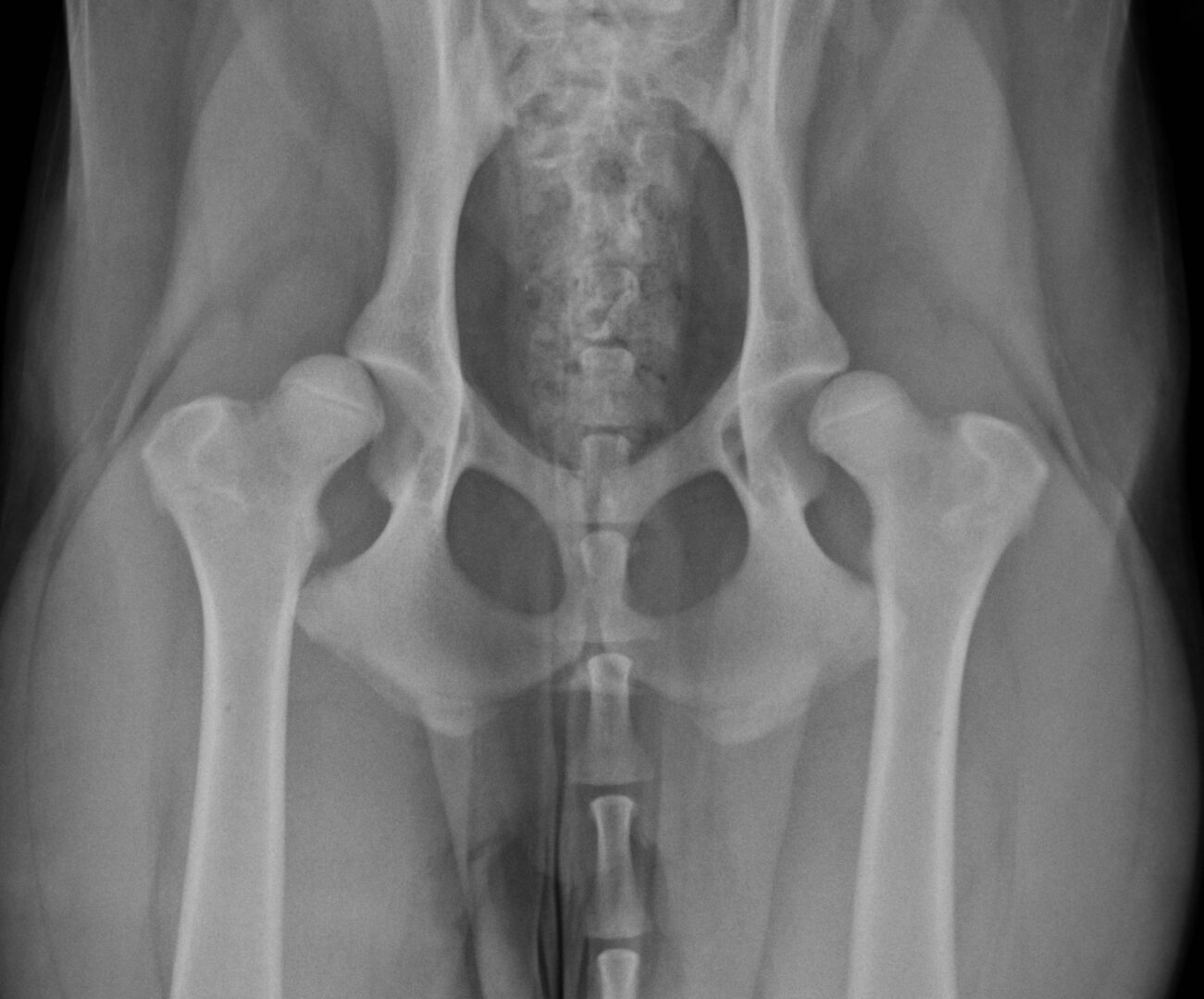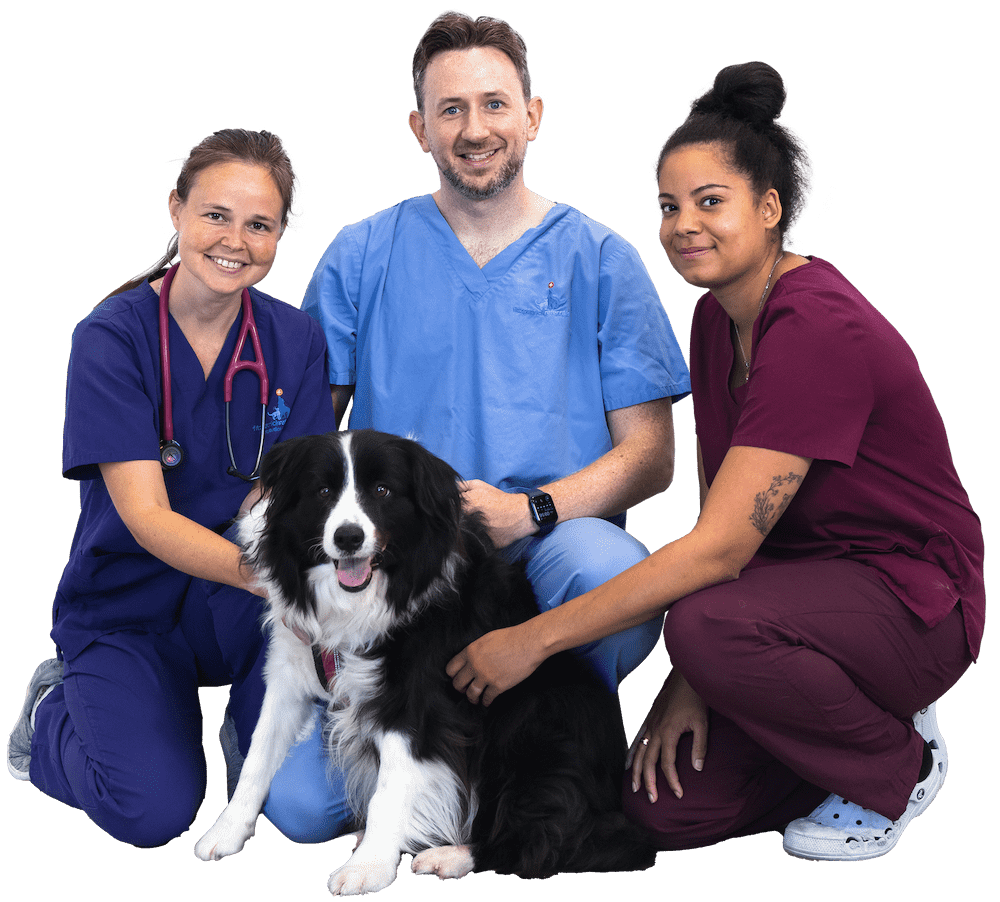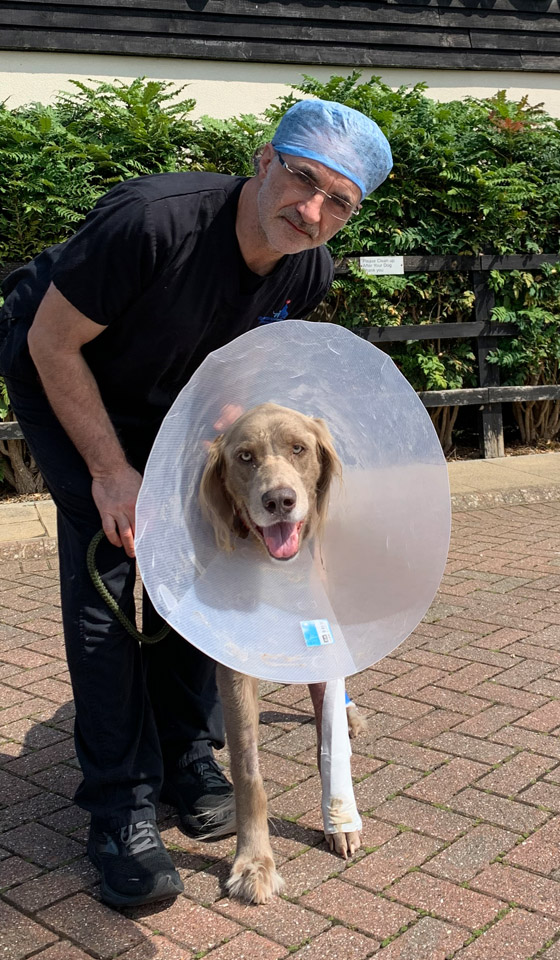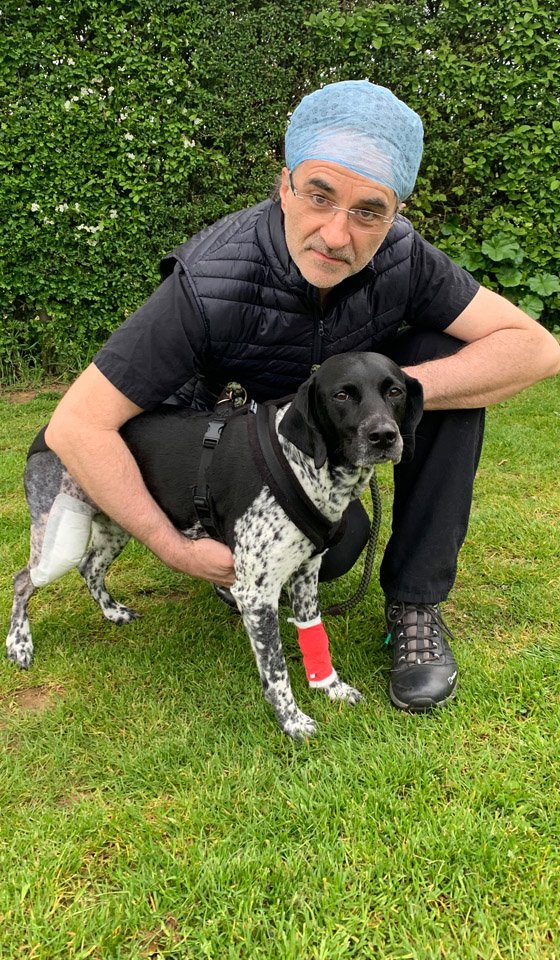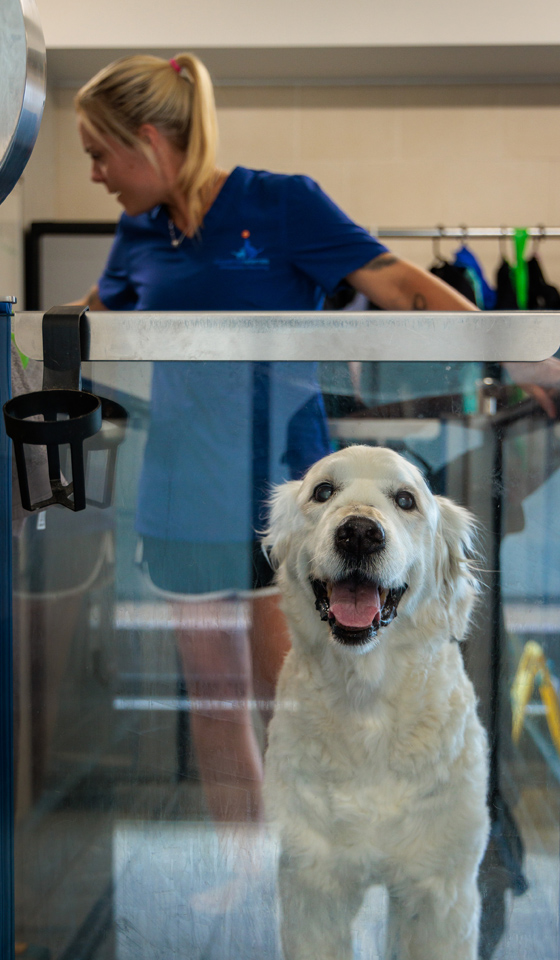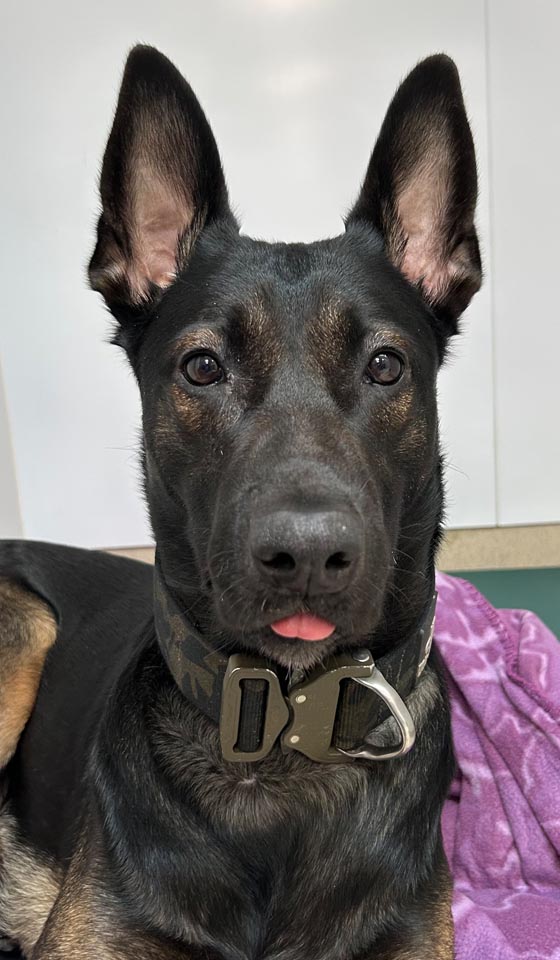Conservative management of hip dysplasia
Physiotherapy has an important role in the management of hip dysplasia. Whilst hip dysplasia is a progressive disease, the condition can be affected by external factors. The main feature of the disease is joint laxity which leads to changes in the joint, abnormal wear and subsequent osteoarthritis.
Aims of rehabilitation
Initial symptoms that your dog may exhibit can be reduced exercise tolerance, problems going up and down stairs, difficulty rising and lameness after exercise. If your primary care vet or orthopaedic clinician should refer your dog to our rehabilitation service, a full physiotherapy assessment is undertaken by one of our chartered physiotherapists. Findings might be altered gait pattern, with or without lameness, reduced weight-bearing load on the affected limb, weakness of specific muscles (most commonly the gluteal muscles) pain manifested by intolerance to be touched in the affected area or during certain movements or postures and reduced range of movement (ROM). Your dog may exhibit all of or just a few of these clinical signs.
Rehabilitation aims to address the above findings and to maintain and/or prevent progression of the disease. After the physiotherapy assessment is completed, a list of focus points is formed and a rehabilitation treatment plan is implemented.
Aims might include the following:
- Reduce pain
- Strengthen the affected muscles
- Improve and maintain soft tissue flexibility
- Improve and maintain ROM
- Enhance gait patterning
Physiotherapeutic treatment options
- Targeted exercises specifically for the gluteal muscles
- Balance and coordination exercises
- “Hands-on” therapy such as massage and basic stretching for pain relief and improving flexibility
- Pain relief might be provided using laser therapy and ice
Hydrotherapy treatment options
- Hydrotherapy, in particular, the underwater treadmill can be a useful tool for strengthening specific muscles and improving gait patterns. The buoyancy of the water provides support to the body which in turn reduces the load on the affected joints whilst exercising the necessary muscles.
- Any physiotherapy programme which is prescribed for your dog is constantly re-evaluated and progressed based on the response to treatment. Owner participation is key as so much of the therapy can be used on a daily basis and provided at home. Detailed instructions are always provided.
Surgical management of hip dysplasia
Should your dog require surgery to address hip dysplasia, rehabilitation can also be implemented post-operatively.
In the initial stages (24 hours-2 weeks) physiotherapy is used to address any possible swelling, reduce pain, maintain soft tissue flexibility and muscle mass. Physiotherapy tools might include ice therapy, massage, laser, joint range of motion exercises, stretches and careful limb loading exercises.
Following this phase (2 weeks – 6 weeks) more progressive exercises are utilised to enhance gait patterning, balance and coordination and hind limb muscle strengthening. At this stage as well as land-based exercises being progressed, hydrotherapy can be introduced either in the pool or using underwater treadmill therapy.
Following a 6-week post-operative assessment by the orthopaedic surgeon, the physiotherapy exercises can again be progressed and more active exercises involving hills and inclines, alternating speeds and change of direction are introduced.
Many dogs with hip dysplasia often visit our rehabilitation service regularly as an outpatient for maintenance and monitoring of the condition. These sessions might involve a change of exercise programme for you to follow in-between visits.
The table below outlines an example hip dysplasia rehabilitation plan:*
| Timescale | Physiotherapy aims | Physiotherapy treatment options |
| 0-2 weeks | Reduce post-operative swelling |
|
| Reduce muscular guarding and maintain soft tissue flexibility |
| |
| Allow careful limb loading |
| |
| 2-4 weeks | Progress limb loading and gait re-education |
|
| Increase muscle mass | Low-level exercise programme and muscle stimulation | |
| Maintain soft tissue length and flexibility | Passive joint range of movements and stretches | |
| Management at home |
| |
| 4-6 weeks | Continue as above, include core stability exercises | Progression of home exercise programme to challenge balance and strength |
| Advice on maintaining controlled exercise when dog feeling better | ||
| 6 – 12 weeks | Increase exercise tolerance | Increase exercise level, considering land and water-based options. |
| Continue to increase core stability | Home exercise programme considering land and water-based exercises | |
| 12 weeks + | Return to full function or establish deficits and advise re long-term management. | Progress to off-lead exercise and previous exercise level if appropriate. |
*Please note that rehabilitation plans should only be followed under the guidance of a qualified rehabilitation professional, who will be able to provide a tailored plan based on the individual patient’s rehabilitation needs.
Related articles
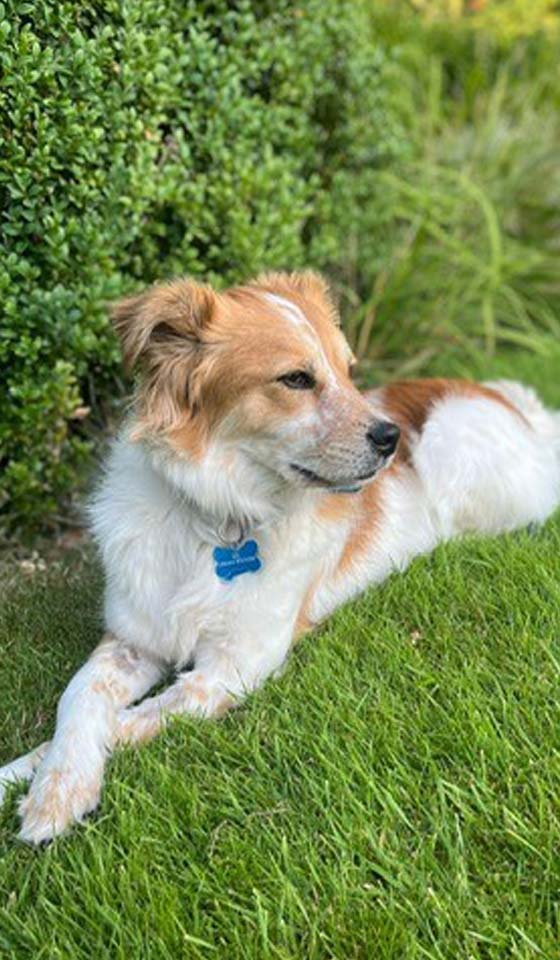
PATIENT STORY
Ralphie’s chronic hip joint dislocation due to severe hip dysplasia
Back in the summer, newly adopted rescue dog Ralphie was referred to our orthopaedic service to investigate the treatment options available to him…
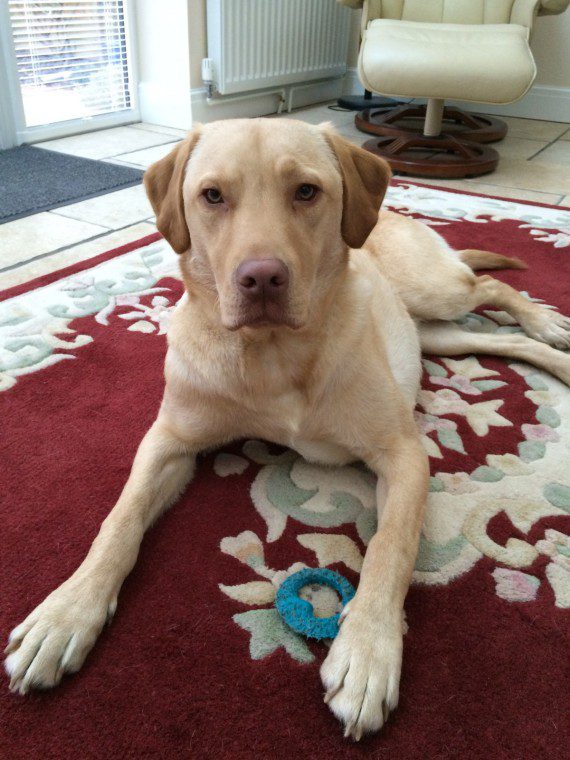
PATIENT STORY
Louie’s bilateral hip dysplasia
This is Louie, a very sweet yellow Labrador aged 17 months old, who was referred to Fitzpatrick Referrals specialist orthopaedic service.
4 minute read
In this article
